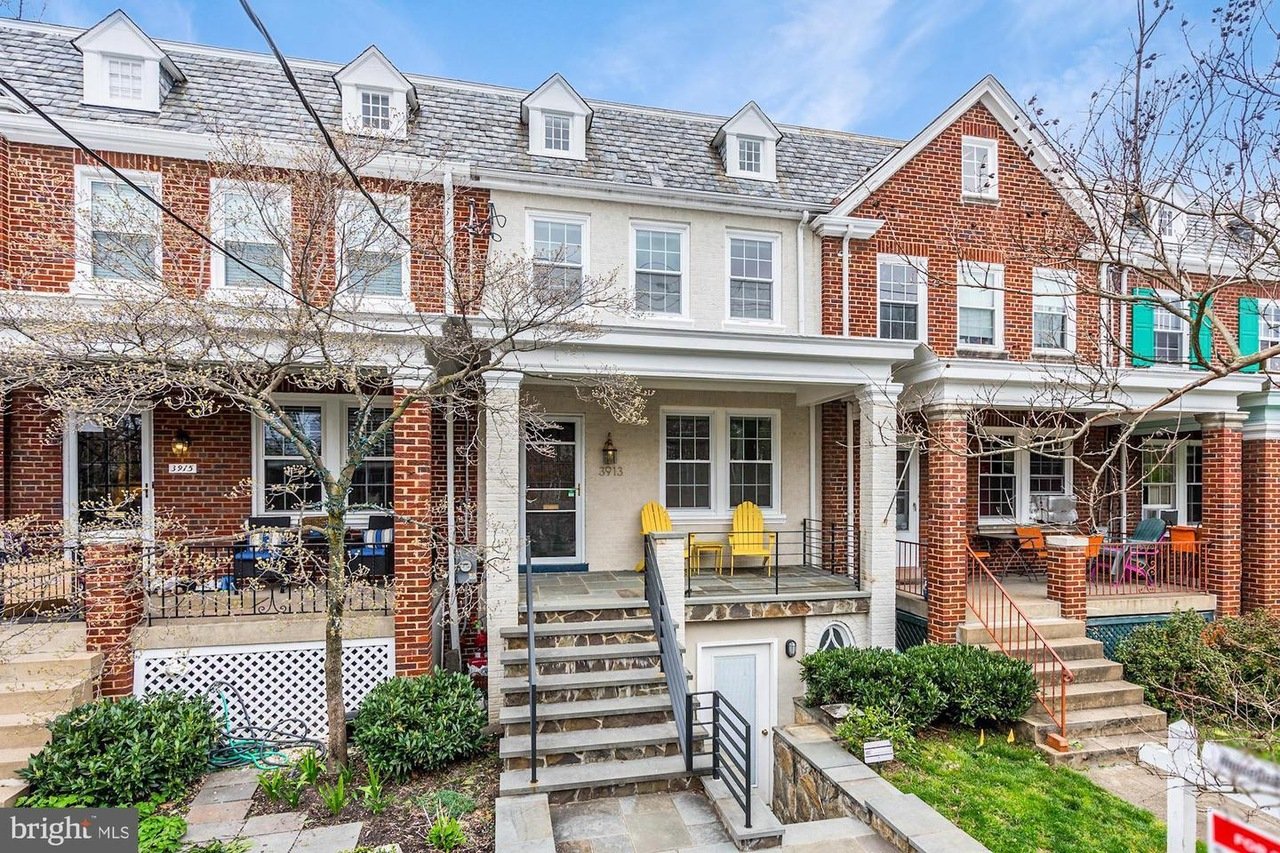You’ve had a long, hard day at work. When you come home and plop down on the couch, the last thing you want is to meet resistance–or worse, none at all.
Finding a sofa that’s comfortable–not too firm, not too squishy–can be a challenge. Not to mention finding one that’s not too formal but is nicer than your college-dorm futon, plus not too large but big enough to fit a few people comfortably.
We spoke with local interior-design experts about how to find that perfect sofa.
Judging Quality
While the number of sofa options on the market can seem intimidating, design experts will tell you that there are mainly two kinds of sofas–as interior designer Barbara Hawthorn puts it: “Those that will only last a year or two and those that will last a lifetime.”
While some high-quality sofas cost $7,500 or more, you don’t have to spend a fortune to get a “lifetime” sofa. Annie O’Connell, showroom manager at Edward Ferrell & Lewis Mittman, a high-end furniture manufacturer in the Washington Design Center, recommends purchasing from a reputable dealer such as Crate & Barrel or Ethan Allen when budget is a consideration: “These stores have many choices below $3,000, and they stand behind the product that they sell. Their sales staff is knowledgeable, and their customer service is stellar.”
Or try choosing pieces that “draw inspiration from much higher-end designers or companies, bringing great design within affordable reach,” says Louine Wailes, a design associate at Room & Board. “We have several designs that reflect styles from the 1930s to ’50s and designers of the period like Edward J. Wormley and work he did at the time for Dunbar Furniture.”
Depending on the room and your lifestyle–with, say, a toddler or pet running around–it may be worth it to buy an inexpensive, “temporary” couch. Ditto if you like to move or redecorate frequently. If you’re looking for a more permanent fixture, an investment sofa could be a good choice.
“Like cars, many sofas look beautiful on the outside or feel comfortable, but it’s really what’s under the hood that determines whether a sofa is a good sofa,” says O’Connell.
The actual construction is not always visible in finished upholstery, so it helps to know what questions to ask and what to be aware of when shopping.
If you’re looking for a sofa to last many years, Hawthorn recommends that you look for a frame made of aged hardwood; best is something kiln-dried, with few knots and a tight grain, such as maple. And ask where a piece was made–Hawthorn says there have been concerns about Asian woods that weren’t properly aged or dried or that contained toxic substances. Good sources are the US, Italy, and Great Britain.
The best joints are screwed and glued or nailed, never just glued or stapled. You don’t want the frame to “rack,” or become loose. “There should be no wiggle to the frame,” O’Connell explains, when you try to move the arms or back.
Look for solid suspension, such as eight-way hand-tied rather than sinuous wire. “It’s more labor-intensive, therefore more expensive,” says O’Connell, “but is generally thought to be the best suspension.”
Choosing a Size
Larger sofas are a trend in furniture design, but be careful: A sofa that may seem like a good size in a big showroom can look enormous in an apartment or average-size living room.
On the other hand, if you have a spacious living room, a small sofa could look miniature. The best way to ensure the perfect scale is to measure.
“Make sure to measure the length, height, and depth of the sofa that you are interested in,” says interior designer Kelley Proxmire. Then, at home, use painter’s tape or newspapers to map out the size on the floor and see how it flows with the room. You can even take it a step further and measure the entire space in order to do a scaled layout, placing different-size sofa templates in different areas.
“Don’t forget that the back height and arm height are what give you a sense of the volume in the space,” says Hawthorn.
Think about how many people you want the sofa to accommodate, says Ezio Mattiace, president of the furniture retailer Poltrona Frau Washington. That will help you determine whether a love seat, two-seater, three-seater, or sectional is right. In a more casual atmosphere, such as a family or rec room, designers agree that a larger sofa tends to work better. A smaller love seat or settee would be more appropriate for a sitting area in a bedroom.
Though it may seem obvious, says Proxmire, “make sure that the sofa has enough clearance to fit though all gates, doorways, and stairwells so that there are no surprises come delivery day.”
Picking a Style and material
Picking sofa fabric can be tricky. “A solid fabric in a neutral color can be a great staple,” says Proxmire, who uses patterned throw pillows to add visual interest. When you want to change the look of the room, you can just change the pillows. A neutral, solid fabric also gives you some flexibility, in that it may work in other rooms or if you move.
A patterned fabric can be a nice focal point, and patterns cover wear and tear better. Keep in mind that large patterns don’t always work on a sofa, says O’Connell, because they may not match up well from cushion to cushion.
If you do pick a pattern, she adds, try to make sure it’s one you won’t tire of: “Try to imagine if you are still going to love it in five or ten years.”
Is cost a factor? Solid fabrics usually cost less, because patterns need more fabric for accurate matching. Another way to save: Opt for a slipcovered sofa instead of upholstered, suggests Proxmire, who likes those sold through Ikea and Ballard Designs. Finally, to save on customization cost and wait time, consider a sofa that comes stocked in a fabric color you like, says Wailes.
Durability is key. Families with children and pets should consider a fabric that rates at least 30,000 on the manufacturer’s “rub” test, suggests Hawthorn.
Look for something resistant to soil, water, mold, and stains plus easy to clean with soap and water. Good options include Sunbrella, Chella, Perennials, and other indoor-outdoor fabrics, which can have the feel of a soft chenille or velvet mohair.
The legs and arms of a sofa are another style element. To add interest to a room, Proxmire likes to vary leg exposure in the space: “If there are several pieces with exposed legs in the room, try looking for a sofa with an interesting skirt.”
Do you want to be able to rest your arms on the sofa while you sit? If so, rolled arms or wider square ones with plenty of padding around the frame are best. Press down on the arms of a chair or sofa to see if you can feel the frame. They should be well padded and not super-soft. Keep in mind that this test doesn’t always apply to contemporary sofas that may have sleeker, tighter arms and backs.
Finding Goldilocks Comfort
The most important aspect of a sofa is its level of comfort. The best way to pick a sofa you’ll feel relaxed in is to visit stores and sit in a variety of types.
“Make note of the seat depth and width,” says O’Connell. “Sit on the seat next to the arm and on the middle cushion. They’ll feel a bit different. Make sure you’re comfortable no matter where you sit on the sofa. That will give you the best overall idea of the size that’s best for you.”
Fabric also makes a difference. “The exact same sofa will feel different if upholstered in a soft fabric versus a tight or stiffer fabric,” says Hawthorn. “If you like that cushy feel, go with a softer fabric like a chenille, woven, cotton, linen, or natural fiber. Leathers and synthetic fibers like Ultrasuede tend to give a tighter sit.” Make sure the fabric is backed to prevent seam slippage and too much stretch.
Less expensive sofas tend to use foam cushions wrapped in polyfiber, while higher-quality cushions are made from spring foam and wrapped in down. The most expensive cushions use an 80/20 ratio of down to feather, says O’Connell. “The favorite of most of our clientele is our Luxe cushion, which has coil springs in a foam core with a 75/25 down-and-feather wrap. You get the luxurious feel of down but with more support and less maintenance, because the springs make the cushions bounce back after sitting.”
For a formal room, it’s best to go with a firmer seat. A more casual space calls for a seat with less resistance, something you can curl up on.
“If you want something firm, go with a firmer spring down or a denser foam with less wrap,” says Hawthorn. “If you want something really cushy, go with a less firm spring down seat that has more down wrap or a less firm memory foam.” For the ultimate cushy couch, you can choose 100 percent down, but be ready to really sink in and then refluff every time you get up. All down isn’t a good option for those prone to backaches.
Try out different types of backs, too, as loose-cushioned and tight-backed sofas feel very different. If you prefer something firmer, increase the proportion of feather to down and add a tighter wrap around the down and feather, says Hawthorn. For the firmest back, opt for all foam, which is usually found on very contemporary sofas.
“Whether you buy plain foam or the most expensive down cushions, rotating your cushions regularly will help them last longer,” says O’Connell.
Another consideration when it comes to padding is what’s on the back of the sofa. Says Wailes: “Quality manufacturers will place padding under the fabric along the back to keep the fabric from looking stretched across a bare frame, which is something to consider if you plan to float the sofa in your room away from a wall.”
This article appears in the May 2012 issue of The Washingtonian.



















